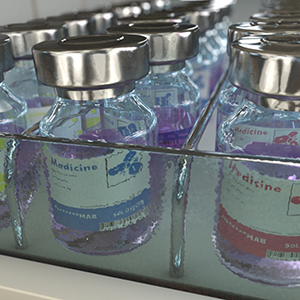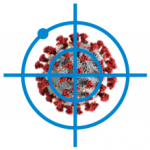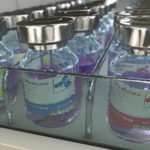 The first biologics license applications (BLAs) for two antibody therapeutics, balstilimab (AGEN2034) and loncastuximab tesirine (ADCT-042), have recently been submitted to the US Food and Drug Administration, bringing the total number of antibody therapeutics undergoing a first review to 18 (see table here for details).
The first biologics license applications (BLAs) for two antibody therapeutics, balstilimab (AGEN2034) and loncastuximab tesirine (ADCT-042), have recently been submitted to the US Food and Drug Administration, bringing the total number of antibody therapeutics undergoing a first review to 18 (see table here for details).
Balstilimab (Agenus Inc.)
Balstilimab (AGEN2034) is a human IgG4k antibody directed against PD-1, a negative regulator of immune activation expressed by T cells. Numerous antibodies that target PD-1 or its ligand PD-L1 (e.g., pembrolizumab, nivolumab, cemiplimab, avelumab, durvalumab) are marketed as treatments for solid tumors as well as lymphoma. Agenus’ clinical studies of balstilimab have focused on its use, either as monotherapy or in combination with anti-CTLA4 zalifrelimab (AGEN1884), as a treatment for cervical cancer. FDA granted both balstilimab and the balstilimab/ zalifrelimab combination Fast Track designations for the treatment of cervical cancer. On September 18, 2020, Agenus Inc. announced that they had initiated a rolling BLA to FDA for balstilimab as monotherapy for the treatment of recurrent/metastatic cervical cancer. Agenus controls worldwide rights to balstilimab, except for certain South American rights, which are controlled by Recepta Biopharma, and Greater China rights, which are exclusively licensed to Betta Pharmaceuticals.
Data from a randomized, blinded, non-comparative, two-arm Phase 2 study (NCT03894215) supported the BLA submission. This study evaluated the efficacy and safety of balstilimab as monotherapy or in combination with zalifrelimab for treatment of patients with advanced cervical cancer who relapsed or progressed after receiving first-line platinum-based chemotherapy for a maximum of 24 months, or until disease progression or unacceptable toxicity. The goal of the study is to evaluate the efficacy of each arm against its relevant historical controls. The primary outcome measure is the objective response rate (ORR) to balstilimab administered with placebo (Treatment Arm 1 – monotherapy), or with zalifrelimab (Treatment Arm 2 – combination therapy). Data from the study were presented at the 2020 European Society for Medical Oncology Virtual Congress. Of 160 patients included in the balstilimab monotherapy arm, the ORRs in PD-L1-positive patients and all patients were 19% and 14%, respectively. Of 143 patients included in the balstilimab/ zalifrelimab combination arm, the ORRs in PD-L1-positive patients and all patients were 27% and 22%, respectively.
Loncastuximab tesirine (ADC Therapeutics SA)
Loncastuximab tesirine (ADCT-042) is an ADC composed of an anti-CD19 humanized IgG1k antibody conjugated via a linker to pyrrolobenzodiazepine (PBD)-dimer toxin that induces the killing of CD19-expressing malignant B cells. The FDA granted Orphan Drug designation to ADCT-402 for the treatment of diffuse large B-cell lymphoma (DLBCL) and mantle cell lymphoma. On September 21, 2020, ADC Therapeutics SA announced the submission of a BLA to FDA for loncastuximab tesirine for the treatment of patients with relapsed or refractory DLBCL.
The BLA submission was supported by data from the open-label, single-arm Phase 2 LOTIS 2 study (NCT03589469), which evaluated the safety and efficacy of loncastuximab tesirine for the treatment of patients with relapsed or refractory DLBCL following ≥2 lines of prior systemic therapy. A total of 145 patients received loncastuximab tesirine as an IV infusion over 30 minutes on Day 1 of each cycle (every 3 weeks) at a dose of 150 μg/kg for 2 cycles, then 75 μg/kg for subsequent cycles for up to one year or until disease progression, unacceptable toxicity, or other discontinuation criteria. The primary outcome measure is the overall response rate (ORR). Positive initial data from LOTIS 2 were presented during the virtual 25th Annual Congress of the European Hematology Association. The ORR was 48.3% (70/145 patients), the complete response rate (CRR) was 24.1% (35/145 patients), and the median duration of response was 10.25 months. The toxicity profile was manageable and no new safety concerns were identified.



